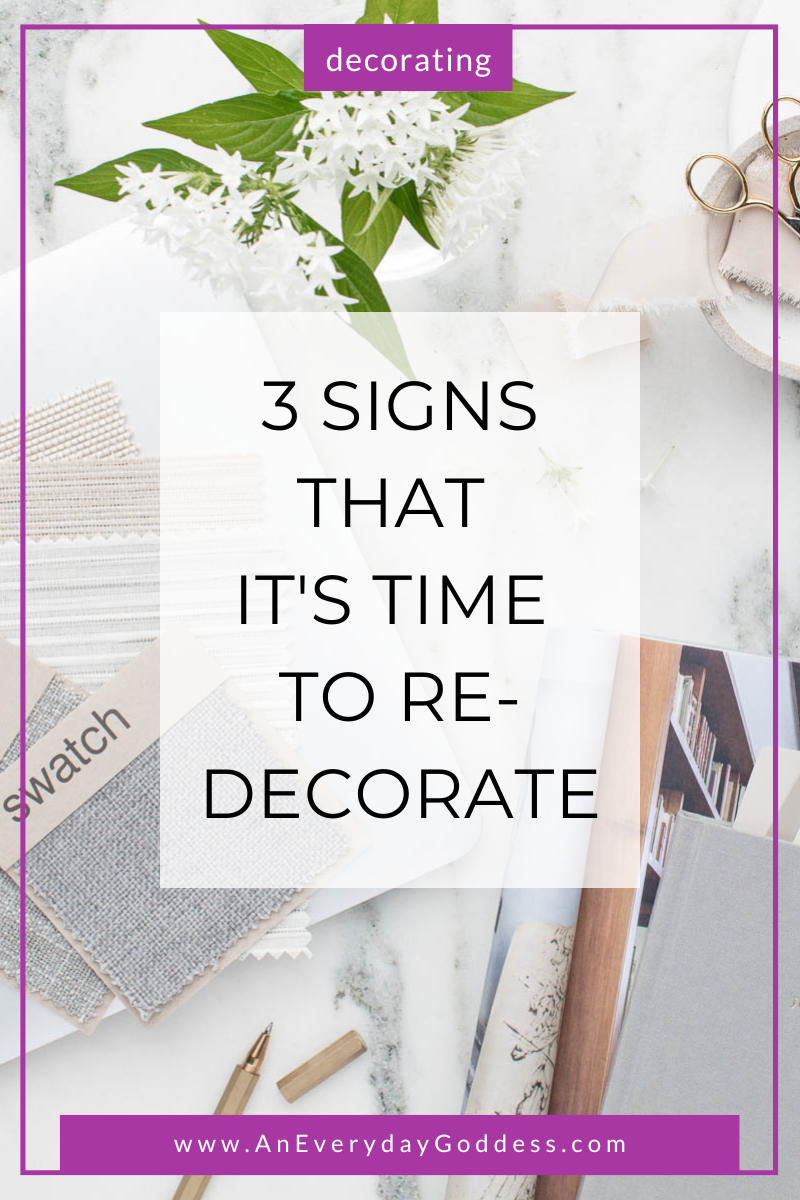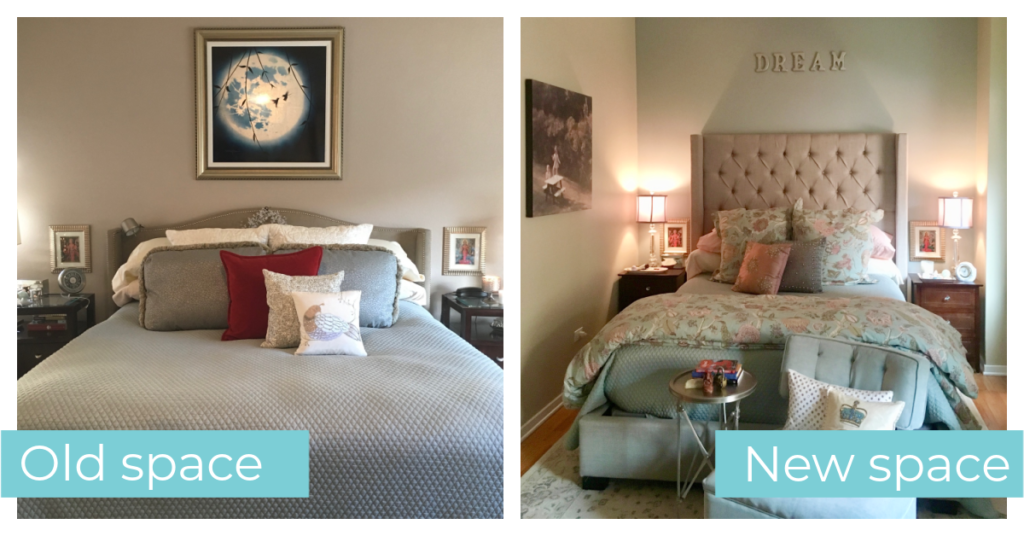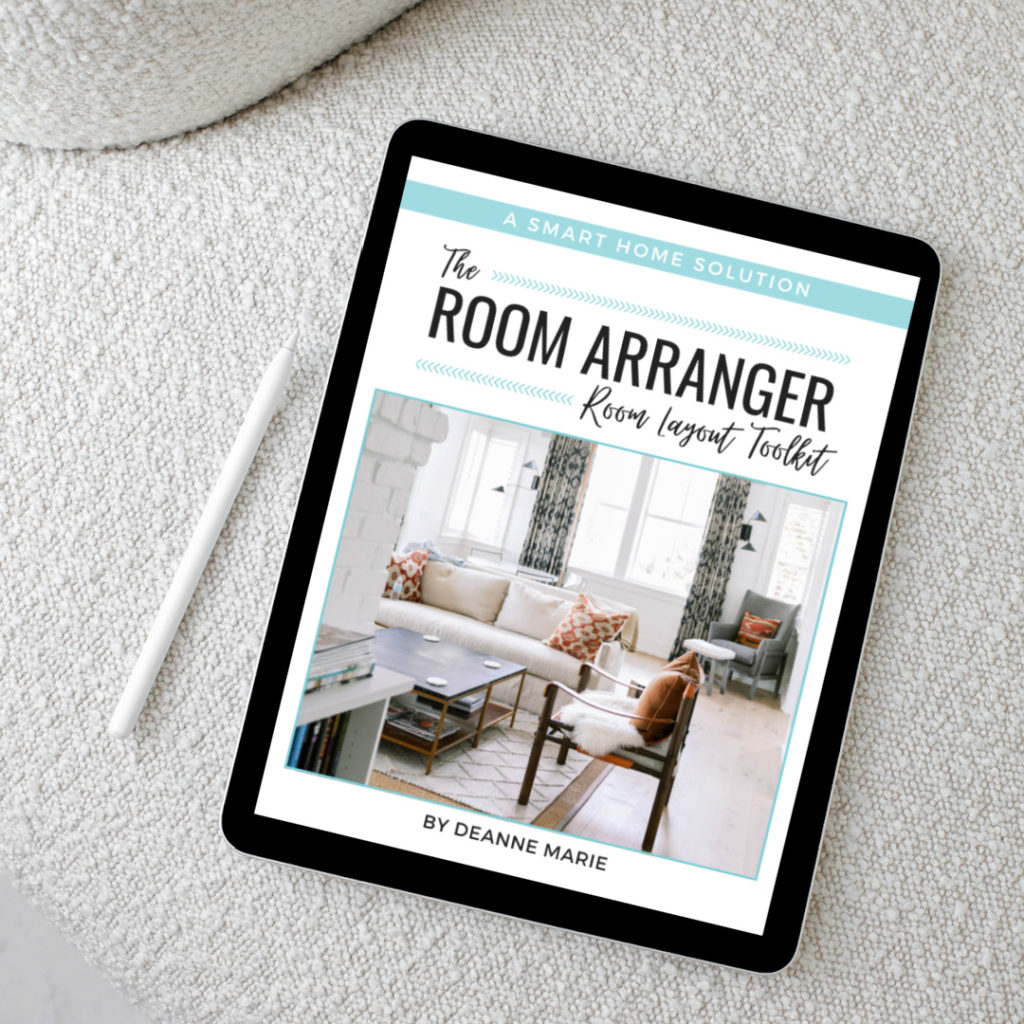
One bright spot from the pandemic, in my opinion, was the focus on home. What home means to us, how our homes serve (or don’t serve) our needs, and how we want to live and feel at home.
For many people, the pandemic was the first time they’d actually spent a lot of time within those four walls. It suddenly dawned on them, “This isn’t how I want to live.” In fact, one survey found that we started re-decorating during Covid to bring more luxury and more coziness to our homes, to make it more of a sanctuary.
No matter what is your primary motivation, there are three basic reasons why a room in your home might need some attention—from a quick refresh to a complete re-do.
1. Your tastes have changed.
You fell in love with the color of the moment a few years ago, but now you’re tired of it. Or you were smitten with Hollywood Glam but your taste now craves the simplicity of Scandinavian design. It’s okay. Make a change to what suits you now. Where possible, re-use any furniture and accessories that fit the new look and replace any taste-specific pieces.
Because taste and interior fashion do change, I always recommend investing in timeless, transitional furniture pieces in a neutral palette. Then pop the latest color trend in easy to replace (and less expensive) textiles like pillows and curtains, accessories and artwork.
One area I’m updating is the décor on my kitchen island. Because I live in an open-plan condo, I created a “screen” of sorts using brightly colored ceramics that had decorated my much larger kitchen island in my prior home. It helps hide the sink and anything on the counter from view. But now I’m feeling like a more subdued and elegant arrangement would be better. I’m also replacing the shades on the buffet lamps in the dining room, since I broke one while putting together a shelving unit. (Turns out, you really shouldn’t walk away from a half-put-together shelving unit!) And instead of the same off-white shade color, I’m switching things up with a champagne tone.
2. Your lifestyle changed.
Any major change in lifestyle calls for a room re-do. During the pandemic, it was the need for a home office or a school and study space. Other examples include a baby coming into the home: that guest room can be turned into a nursery. At the other end of the time continuum, when kids go off to college, their rooms are prime candidates for a dedicated hobby room or man cave.
Moving into a smaller home is also a great time to give your old furniture a new life. Perhaps the modern sectional that fit well in the family room of the split-level is out of place in the living room of the vintage bungalow, or the king-size bed eats up precious space in the new master bedroom. Both are perfect reasons to replace them with more space-appropriate options. (Tip: Use a furniture layout plan, like my Room Arranger Room Layout Kit to plan your space!) Sell the furniture you want to replace at a consignment store or an online site and use the money towards something new,
My “furniture doesn’t fit” dilemma was downsizing from a 2,600 square foot home with a massive master bedroom to an 1,100 square foot condo with, well, a more bijoux master. My king size bed and bachelor chest night tables were all simply too big. So, I purchased a new upholstered queen size bed from Macys (on sale!). That left little room for night tables. I used the filter tools on Wayfair to find the perfect, smaller scale nightstands. They still coordinate with the dark tones of a Thomasville deco-inspired armoire that fits nicely on the other side of the room. Here’s the old and new spaces:

Even if your existing furniture does fit in the smaller home, changing up the look of your room with paint, textiles and accessories can give you a fresh start and remind you less of your previous home. This psychological element is especially important if your downsizing was the result of an unpleasant event, such as a foreclosure, a divorce, or a sudden, forced retirement.
3. Time took its toll.
The passage of time and general wear takes a toll on a home’s interior finishes. Generally speaking, paint, carpet, drapery and upholstery need updating every six to 12 years, depending on the quality of the finish and the extent of use.
Take a look around your home with fresh and non-judgmental eyes. Is the couch worn out to the point you’re covering the arms with throws? It’s time for a re-upholstery job, or replacement. If the couch is good quality and you love its comfort and design, consider re-upholstery; in most cases, that can be less expensive that a new purchase. Or perhaps the cushions are worn down, but the frame is still solid. In that case, if the cushions have zippers, a foam shop or upholsterer can simply make new inserts! If budget is an issue, wrap the old cushions in batting (available at sewing and crafts stores like Michaels, Joann, or Hobby Lobby).
How is the paint finish on the walls? Remove a picture that’s been hanging for a while and you’ll find out. If you see a visible difference between the surface that was covered by the picture and the surrounding wall, either from smoke, fading or general grime, it’s a good time to repaint.
In fact, just painting the walls can make a huge difference in how your home feels. Once I was in my home for about nine years, I began systematically repainting all of the rooms that still had basic builder beige paint. I worked room by room as budget, time and inspiration allow. All of the trim got a fresh coat of clean white semi-gloss. Although it took couple of years to refresh every room, it was worth it in the end. My reward was a home that felt new and that supported my lifestyle.
***
Take a look around your home. What areas need attention, based on these three rationales for redecorating? Once you’ve identified them, prioritize your list based on where it will make the most difference to your everyday life. Usually this is the bedroom/bathroom or kitchen. Then, make a plan, including a budget, a list of what you want to change, and a schedule for the work to be completed.
If you do this, you’ll be rewarded with a room that is comfortable, functional and befitting your life.


 Hi! I’m Deanne Marie – designer, author, attorney, travel enthusiast and everyday goddess. I love showing other single professional women how to create a home that is as comfortable as it is stylish, and have joy-filled, everyday goddess kind of life.
Hi! I’m Deanne Marie – designer, author, attorney, travel enthusiast and everyday goddess. I love showing other single professional women how to create a home that is as comfortable as it is stylish, and have joy-filled, everyday goddess kind of life.
